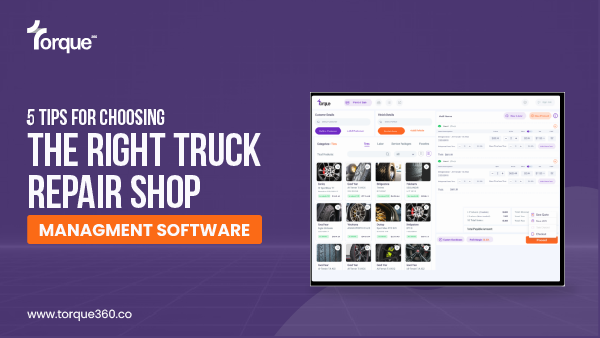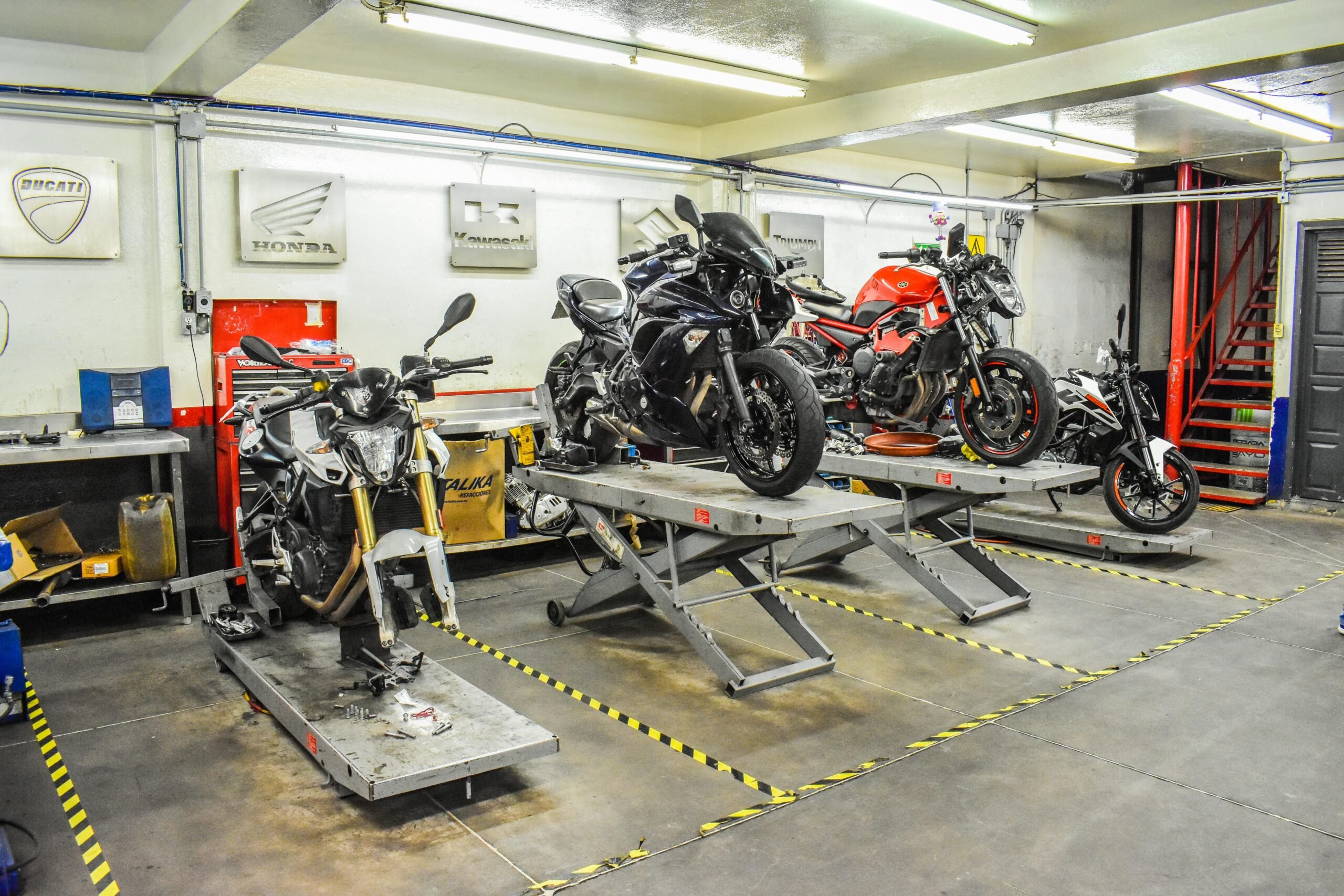Running a successful motorcycle repair shop involves more than just fixing bikes. To keep operations smooth, efficient, and profitable, it’s essential to have the right tools in place. One of the most important tools you’ll need is a point of sale (POS) system. The right motorcycle repair point of sale software not only handles transactions but also streamlines inventory management, customer relations, and reporting, making it a critical part of your business’s success. In this ultimate guide, we’ll walk you through everything you need to know about choosing the best motorcycle repair shop POS software in 2024.
What is Motorcycle Repair Point of Sale Software?
Motorcycle repair point of sale (POS) software is a specialized tool designed to help motorcycle repair shops manage sales, inventory, customer data, and financial transactions. Unlike traditional retail POS systems, motorcycle repair shop POS software includes features tailored to the unique needs of a repair shop, such as tracking service labor, parts inventory, job orders, and estimating costs. This software ensures that everything from the initial customer interaction to the final payment and invoice is handled seamlessly.
Why Do You Need Motorcycle Repair Point of Sale Software in 2024?
In 2024, simply managing customer transactions at the counter is no longer enough. The modern motorcycle repair shop needs a POS system that goes beyond the basics to manage all aspects of the business. Here are some key reasons why investing in motorcycle repair point of sale software is essential:
1. Streamlined Transactions
With a POS system, you can easily process payments, generate invoices, and apply discounts, ensuring smooth transactions for your customers. The software typically supports multiple payment methods, including cash, card, and mobile payments, making it easier for customers to pay and for you to process their payments quickly.
2. Efficient Inventory Management
For a motorcycle repair shop, managing inventory is critical. A good POS system integrates with your inventory, automatically updating stock levels when parts are sold or used in a repair. This feature helps you avoid stockouts and overstocking, ensuring that you always have the right parts on hand.
3. Accurate Job Estimates
Motorcycle repair POS systems typically include features for creating accurate estimates for customers. You can easily input labor costs, parts pricing, and repair details to provide a clear and professional estimate. This reduces misunderstandings and builds customer trust.
4. Improved Customer Relationships
Motorcycle repair POS software can track customer history, making it easier to follow up on previous repairs, offer discounts, or send reminders for future services. This personalized approach helps you build stronger customer relationships and increase customer retention.
5. Reporting and Analytics
Advanced POS systems generate detailed reports and analytics, which can provide insights into your shop’s financial health, popular services, and inventory trends. With this data, you can make more informed decisions and adjust your strategy to optimize profits.
6. Increased Efficiency
By automating many aspects of your shop’s operations, the POS system reduces the manual work required for tasks such as billing, inventory management, and service tracking. This increased efficiency allows your team to focus more on repairs and customer service, ultimately boosting productivity.
Key Features to Look for in Motorcycle Repair Point of Sale Software
When selecting motorcycle repair point of sale software, it’s important to choose a system with the features that will best meet the specific needs of your shop. Below are some essential features to look for in 2024:
1. Comprehensive Inventory Management
Motorcycle repair shops rely heavily on parts inventory. Look for POS software that allows you to easily track parts and supplies, manage stock levels, and generate purchase orders when needed. The software should also integrate with suppliers to ensure that part availability and pricing are up to date.
2. Job and Work Order Management
A good POS system should help you manage work orders effectively. This feature allows you to track the status of repairs, assign tasks to technicians, and keep customers informed of progress. The system should also allow you to create job templates for frequently performed repairs to speed up the process.
3. Customer Relationship Management (CRM)
CRM features within the POS system allow you to store detailed customer information, such as contact details, repair history, and preferences. This information is invaluable for offering personalized service and building long-term customer relationships. The CRM also allows you to send reminders for upcoming maintenance or promotions.
4. Estimate and Invoice Generation
The ability to generate accurate estimates and invoices is essential for any repair shop. The POS system should allow you to quickly create detailed estimates for customers, including parts, labor, and any additional services. It should also be able to generate invoices once the job is complete, making the payment process easy for both you and the customer.
5. Multi-Payment Support
Your POS system should support various payment methods, such as credit cards, debit cards, mobile payments, and cash. Some systems may even support contactless payments or digital wallets, providing customers with convenient ways to pay for their services.
6. Reporting and Analytics
The software should offer robust reporting tools to help you track your sales, expenses, inventory, and overall business performance. Customizable reports will allow you to analyze trends, identify popular services, and make informed decisions to improve your business operations.
7. Mobile Compatibility
In today’s world, mobility is key. Look for POS software that offers mobile compatibility, so your team can access the system from tablets or smartphones. This is especially useful for technicians who may need to check the status of a job or update work orders while on the go.
8. Technician Management
Many motorcycle repair shops employ a team of technicians. Your POS system should allow you to track technician performance, assign jobs, and monitor labor hours. It should also integrate with payroll systems to calculate wages based on hours worked.
9. Integration with Accounting and Payment Systems
Integration with accounting software is essential for keeping accurate financial records. Your POS system should integrate seamlessly with popular accounting software like QuickBooks, Xero, or other platforms. This integration allows you to automatically sync sales data, track expenses, and manage finances without having to do manual data entry.
10. Cloud-Based System
A cloud-based POS system ensures that your data is always accessible, even if your shop experiences technical difficulties. It also provides real-time updates and secure data backups, giving you peace of mind knowing that your information is safe and up to date.
Top Benefits of Using Motorcycle Repair Point of Sale Software
Investing in the right motorcycle repair point of sale software can bring numerous benefits to your business, including:
1. Time Savings
Automating tasks like invoicing, inventory tracking, and reporting saves valuable time for your staff. This allows them to focus more on customer service and repairing bikes.
2. Improved Accuracy
The automation of calculations and stock tracking ensures that you avoid human error, leading to more accurate estimates, invoices, and inventory management.
3. Better Financial Management
POS software helps you track your revenue, expenses, and profits in real-time. Detailed financial reports help you make informed decisions about pricing, discounts, and budgeting.
4. Better Customer Service
By tracking customer history and offering personalized service, you can create a loyal customer base. The POS system ensures that you don’t miss important follow-ups or maintenance reminders.
5. Easy Staff Management
POS systems that include technician management tools help you monitor labor performance, which can aid in payroll and job assignment. This ensures you’re getting the most out of your staff and can allocate tasks effectively.
6. Compliance with Industry Standards
Some POS systems include features that help you comply with local regulations, such as tax calculation and invoicing requirements. This reduces the chances of making mistakes that could lead to legal or financial issues.
How to Choose the Best Motorcycle Repair Point of Sale Software
With so many options available, choosing the best motorcycle repair POS software can be overwhelming. Here are some steps to help you make the right decision:
1. Assess Your Needs
Before shopping around for POS software, assess your shop’s specific needs. Consider the size of your shop, the volume of repairs, and the features that are most important to you, such as inventory tracking, CRM, or technician management.
2. Look for Scalability
As your shop grows, you’ll need a POS system that can scale with you. Choose software that can handle an increasing number of transactions, customers, and inventory.
3. Read Reviews and Compare Options
Look for reviews from other motorcycle repair shops to learn about their experiences with different POS software. Compare features, pricing, and customer support to find the best option for your business.
4. Test the Software
Many POS providers offer free trials or demos. Take advantage of these to test the software’s functionality and see if it fits your workflow.
5. Consider Support and Training
Choose a software provider that offers excellent customer support and training resources. This will help ensure a smooth transition and keep your shop running efficiently.
Conclusion
The right motorcycle repair point of sale software is a game-changer for motorcycle repair shops in 2024. By choosing software that integrates essential features like inventory management, customer relationship management, job tracking, and reporting, you can improve your shop’s efficiency, accuracy, and profitability. Whether you run a small repair shop or a large business, the right POS system will streamline your operations, enhance the customer experience




